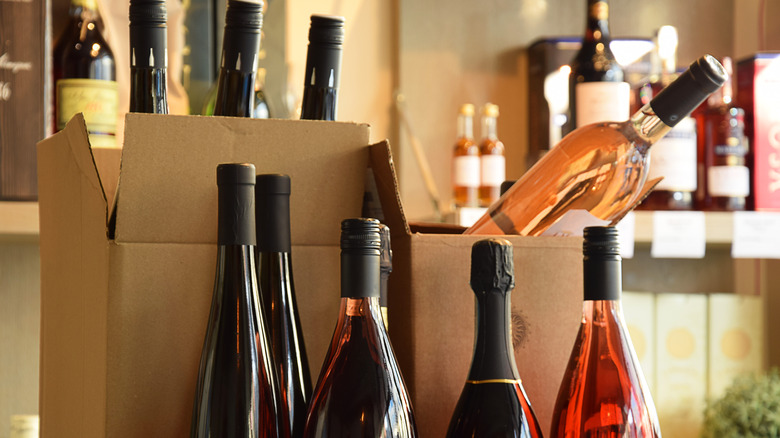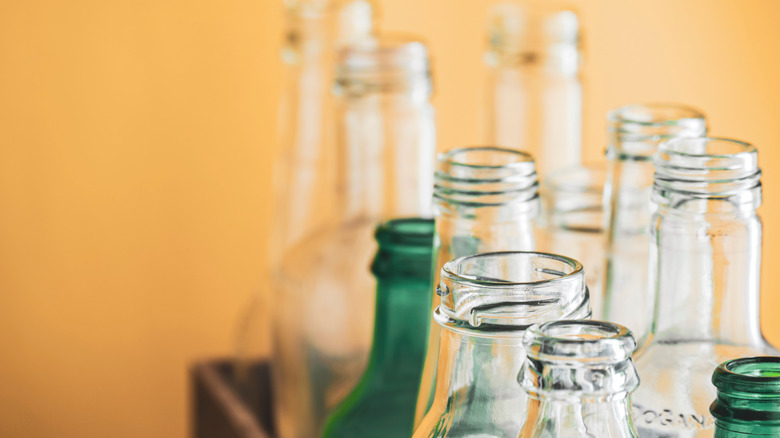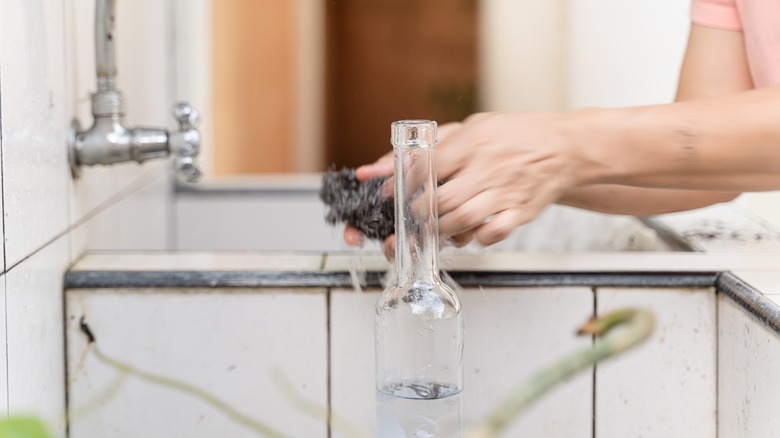No Watering Can In The House? Upcycle Your Empty Wine Bottles To Take Care Of The Plants
Watering cans are convenient gardening tools for indoor houseplants and outdoor gardens but are far from necessary. Even those with the lushest houseplant collection may not own a watering can for a variety of reasons. They can be bulky, a bit of an eyesore, and more decorative ones tend to be more expensive and even less practical.
Still, it's a lot more convenient to water your plants from a can or container than bringing each plant to the sink. One easy, cost-efficient, and sustainable option is to swap out your watering can for a wine bottle. Glass is only recycled at a rate of 31.3%, as the EPA reported, accounting for 5.2% of all landfill waste in 2018. Cut down on your carbon footprint by reusing your wine bottles, or any glass bottle, as a water can, or take it a step further by turning it into a self-watering system.
DIY self-watering
The simplest way to use a wine bottle as a watering receptacle is to fill it with water and take advantage of the long neck to get under dense foliage, funneling the water straight into the soil and avoiding potential crown rot. However, if you prefer a self-watering system, wine bottles are perfect for a quick DIY.
For larger indoor pots are wide-mouthed outdoor containers, you only need to fill your clean wine or other long-necked glass bottles with water and stick it into the soil, roughly an inch or two deep. Ensure the soil is moist beforehand, as the water will likely spill over the surface, creating a muddy mess on bone-dry soil. If you want to get a little fancier and ensure a slower release, you could screw on the top, if the bottle has one, or cover it with a plastic bag or wrap. Poke a hole in the top before digging into your plants; the water will slowly trickle out as the plant needs it.
Cleaning and sterilizing the bottles
While wine bottles are a great way to self-water your plants, they need to be cleaned and sterilized first — no one wants stray alcohols or sugars to get into their plants. Since it'll be so regularly exposed to water, it's not a bad idea to take the label off, either. In many cases, a simple, clear, or green glass bottle looks much less bulky than a labeled one.
For just watering your plants, simple soap and hot water should do the trick of cleaning your used wine bottles; just make sure any of the original liquid is gone, as it could turn into mold if left to sit. This is why running your bottle through the dishwasher may be a bad idea, as small food particles could get stuck inside and grow bacteria. Use a bottle brush to scrub inside and let it air dry upside down. As for the label, simply soaking the bottles in boiling water should loosen them up enough to scrape them off. If not, try adding soap or baking soda into the mix.


